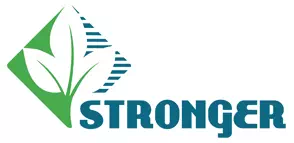

|
Waterbody/Wetlands Protection
The Clean Water Act's jurisdiction extends to “waters of the United States,” including some wetlands. Current implementing regulations define the term wetlands to mean "those areas that are inundated or saturated by surface or groundwater at a frequency and duration sufficient to support, and that under normal circumstances do support, a prevalence of vegetation typically adapted for life in saturated soil conditions. Wetlands generally include swamps, marshes, bogs and similar areas." Wetlands and all other jurisdictional waters are recognized as important features in the landscape that provide numerous beneficial services for people and for fish and wildlife. Some of these services, or functions, include protecting and improving water quality, providing fish and wildlife habitats, storing floodwaters, and maintaining surface water flow during dry periods. These beneficial services, considered valuable to societies worldwide, are the result of the inherent and unique natural characteristics of wetlands. The following topics are covered in this section of the Natural Gas Extraction Portal: CWA Section 401 - Water Quality Standards and Certification Water quality standards are the foundation of the water quality-based control program mandated by the CWA. Water quality standards define the goals for a waterbody by designating its uses, setting criteria to protect those uses, and establishing provisions to protect water quality from pollutants. A water quality standard consists of four basic elements:
Water quality standards are an effective tool available to states to protect the all water bodies (including wetlands). Water quality standards, including designated uses, criteria, and an antidegradation policy can provide a sound legal basis for protecting these resources through state water quality management programs. Section 401 Water Quality Certification gives EPA, states and authorized tribes an effective tool to help protect water quality, by providing an opportunity to address the aquatic resource impacts of federally issued permits and licenses. Under Section 401, a federal agency cannot issue a permit or license for an activity that may result in a discharge to waters of the U.S. until the state or tribe where the discharge originates grants or waives Section 401 certification. The language of Section 401 is written very broadly with respect to the activities it covers. Specifically, it states: "Any applicant for a Federal license or permit to conduct any activity including, but not limited to, the construction or operation of facilities, which may result in any discharge into the navigable waters, shall provide the licensing or permitting agency a certification from the State in which the discharge originates." The major federal licenses and permits subject to Section 401 are Sections 402 permits (point source discharges of pollutants other than dredged or fill material waters) and 404 permits (point source discharges of dredged or fill material). When a Section 404 permit is required, a CWA Section 401 certification must first be obtained from the authorizing jurisdiction. A Section 401 certification affirms that the discharge would not violate the state's water quality standards. Although Section 401 certification can be an effective tool for protecting water quality, it is limited in scope and application to situations involving federally-permitted or licensed activities that may result in a discharge to a water of the U.S. If a federal permit or license is not required, or would authorize impacts only to waters that are not waters of the U.S., the activity is not subject to CWA Section 401. The state or Tribe can make one of four decisions with regard to a Section 401 certification:
To learn more, please visit the Clean Water Act Section 401 Water Quality Certification: a Water Quality Protection Tool for States and Tribes. This handbook describes CWA Section 401 certification authorities, the way different state and tribal programs use certification, and how state and tribal certification programs leverage available resources to operate their certification programs. CWA Section 404 - Dredge and Fill Regulations Section 404 of the Clean Water Act (CWA) establishes a program to regulate the discharge of dredged or fill material into waters of the United States, including wetlands. Activities in waters of the U.S. regulated under this program include fill for development, water resource projects (such as dams and levees), infrastructure development (such as highways and airports) and mining projects. Section 301(a) of the CWA prohibits the unpermitted discharge of dredged or to waters of the U.S., unless the activity is exempt from Section 404 regulation (e.g. certain farming and forestry activities). Responsibility for implementing the 404 Program is divided among three federal programs:
As defined by the U.S. Army Corps of Engineers (USACE) and the U.S. Environmental Protection Agency (EPA), wetlands are: "Areas that are inundated or saturated by surface or ground water at a frequency and duration sufficient to support, and that under normal circumstances do support, a prevalence of vegetation typically adapted for life in saturated soil conditions. Wetlands generally include swamps, marshes, bogs, and similar areas." Application of Sections 401 and 404 to Natural Gas Extraction, Production and Processing Regarding the natural gas industry, application of Sections 401 and 404 may apply where construction activities encroach into a waterbody including wetlands. Sections 401/404 could apply and should be considered during the:
Here are three questions to keep in mind in determining if your actions require 404 regulatory approval:
Activities that impact wetlands are regulated through a permit review process. Two types of permits address impacts on wetlands:
A Letter of Permission, a type of individual permit, can also be issued in situations where the USACE District Engineer determines the proposed work would be minor, would not have significant individual or cumulative impact on environmental values, and will not encounter appreciable opposition. Concerned fish and wildlife agencies and, typically, adjacent property owners who might be affected by the proposal are notified, but the public at large is not. The USACE must consult with other federal and state agencies before issuing a Letter of Permission. In general, to obtain a Section 404 permit, applicants must demonstrate that the discharge of dredged or fill material would not significantly degrade the nation's waters and there are no practicable alternatives less damaging to the aquatic environment. CWA Section 401 State Authorization The CWA directly grants all states Section 401 certification authority (U.S. territories are considered "states" under the CWA). The CWA authorizes use of existing tribal regulatory authority for managing EPA programs, but does not grant additional authority to tribes. EPA recognizes that, in general, tribes possess the authority to regulate activities affecting water quality on the reservation. The EPA does not recognize tribal authority and approve tribal administration of the water quality standard program in the absence of verifying documentation. EPA will not delegate water quality standards program authority to a tribe unless the tribe adequately shows that it possesses the requisite authority.
CWA Section 404 State Assumption The CWA provides States and Tribes the option of assuming administration of the Federal Section 404 permit program in certain waters within State or Tribal jurisdiction (see EPA fact sheet). More Resources Clean Water Act Section 404(q) Memorandum of Agreement. Agreement between the EPA and the Department of the Army. Clean Water Act, Section 401 Certification (EPA). Describes compliance requirements, application; procedures, and license suspension. Construction Industry Compliance Assistance (CICA) Center - Wetlands (NCMS). The CICA Wetlands section contains useful features that will help you understand the regulations and find out how to comply. Construction Industry Compliance Assistance (CICA) Center. CICA Center is your source for plain language explanations of environmental rules for the construction industry. Dredge and Fill/Wetlands (Section 404) Permit Requirements for Construction Projects. If your construction project requires you to perform work in waters of the U.S., you will likely need to obtain a Clean Water Act Section 404 permit. How Wetlands are Defined and Identified. Definition of wetlands as used by the U.S. Army Corps of Engineers and EPA since the 1970s for regulatory purposes. Memorandum of Agreement Between the Environmental Protection Agency and the Department of the Army (EPA). Establishes policies and procedures to implement Section 404(q) of the Clean Water Act to "minimize, to the maximum extent practicable, duplication, needless paperwork and delays in the issuance of permits." Oil and Natural Gas Pipelines: Role of the U.S. Army Corps of Engineers. A discussion of the Corps regulatory responsibilities pursuant to Section 404 of the Clean Water Act and Section 10 of the Rivers and Harbors Act of 1899. Section 401 Certification and Wetlands (EPA). This fact sheet describes state and eligible tribal authority under Section 401 of the Clean Water Act (CWA). U.S. Army Corps of Engineers. The Department of the Army regulatory program. U.S. Army Corps of Engineers Nationwide Permits under CWA Section 404 (USACE). This site provides summary and detailed information on the 404 general permits issued by USACE. Wetlands Research and Technology Center (WRTC). Consolidates administrative, technological, and research skills in the area of wetlands science and engineering that are available at the U.S. Army Engineer Research and Development Center (ERDC).
|
Funded by EPA through a Cooperative Agreement
|
 |
||
About | Technical Topics | Federal Statutes & Regulations - US EPA | Federal Statutes & Regulations - Non-EPA | Emergency Response |
|
EPA Resources | State/Local Resources | Other Resources | Acronyms | Search | Disclaimer | Home




